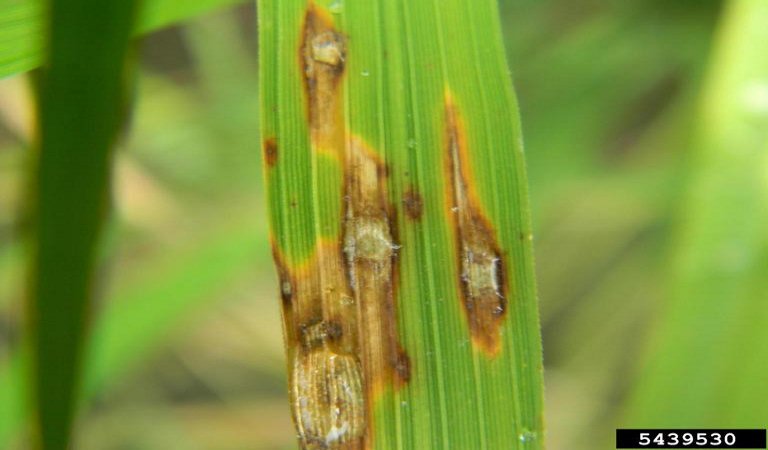Major Diseases in Rice
Definitions
Sheath Blight: Sheath blight is a fungal disease caused by Rhizoctonia solani. Symptoms are usually observed from tillering to milk stage in a rice crop. It occurs throughout the rice-growing areas in temperate, subtropical, and tropical countries. Rice sheath blight is found in all rice production areas, and is decreasing rice production especially in intensified production systems. Studies at IRRI showed that sheath blight causes a yield loss of 6% across lowland rice fields in tropical Asia. (IRRI)
Bacterial Blight – Bacterial blight is caused by Xanthomonas oryzae pv. oryzae (Xoo) and affects the rice plant at the seedling stage where infected leaves turn grayish green and roll up. As the disease progresses, leaves turn yellow to straw-colored and wilt, leading whole seedlings to dry up and die. The disease occurs in both tropical and temperate environments, particularly in irrigated and rainfed lowland areas. It is commonly observed when strong winds and continuous heavy rains occur. The disease is severe in susceptible rice varieties that are treated with high nitrogen fertilizer.

Bacterial Blight: Bacterial blight is one of the most destructive rice diseases in Asia and has historically been associated with major epidemics. It occurs in China, Korea, India, Indonesia, the Philippines, Sri Lanka, Myanmar, Laos, Taiwan, Thailand, and Vietnam. The disease also occurs in Northern Australia and Africa.
In the late 70s, epidemics due to bacterial blight were reported in India. The advent of rice varieties bearing genes with resistance to the disease has changed the perception about the disease: the incorporation of host-plant resistance genes in rice varieties, their adoption and deployment in the world’s main rice-producing environments is probably one of the most significant evidences of the role of plant pathology in agricultural development.
Bacterial blight nevertheless remains an important concern and many countries will not endorse the release of new rice varieties unless they carry resistance to the disease. Whenever susceptible rice varieties are grown in environments that favor bacterial blight, very high yield losses, as much as over 70%, may be caused by bacterial blight. It is particularly serious in hybrid rice, and therefore, active breeding in national and commercial breeding programs have developed and released some hyrbids that have resistance to the disease.


Leave a Reply